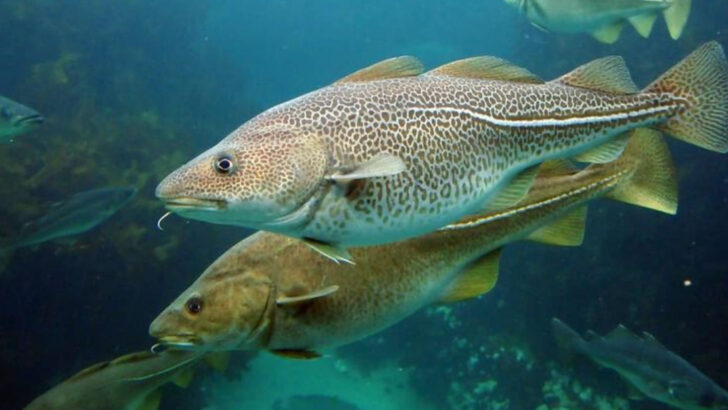America used to eat differently.
Bolder. Stranger. Fishier.
Before salmon got fancy and tilapia took over, the docks were packed with fish that told a richer story—names like tautog, sheepshead, and butterfish filled barrels and bellies alike. These weren’t just dinner—they were tradition, grit, and flavor hauled straight from our coasts.
Now? They’ve slipped through the cracks.
Replaced by imports and forgotten by menus, these 14 fish once ruled the markets from Maine to the Gulf. Some were weird. Some were wonderful. All were wildly popular.
It’s time to crack open the ice chest of history and meet the fins that fed a nation—before they vanished from the spotlight.
Atlantic Halibut
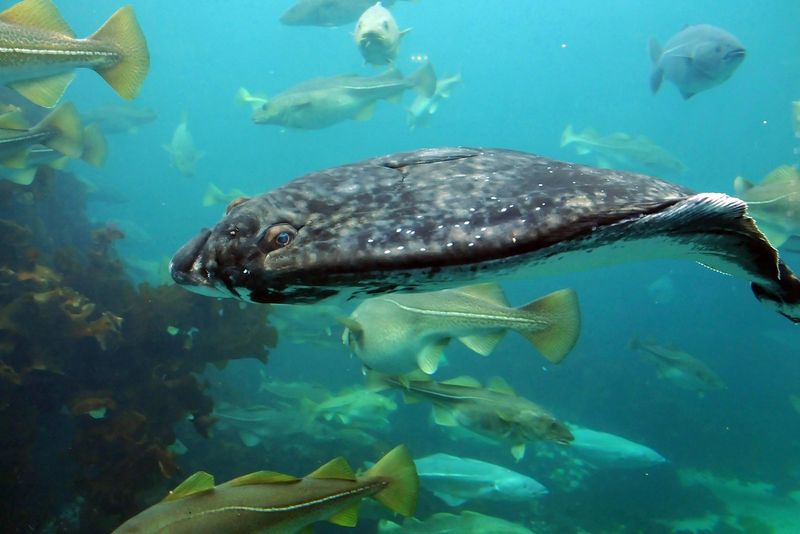
The Atlantic Halibut, with its flat body and eyes located on one side, was once a prized catch along the Eastern seaboard. Its firm, white flesh made it a chef’s favorite, often featured in gourmet recipes.
Historically, this giant of the deep was a staple at dinner tables, celebrated for its mild flavor and versatility in dishes. Sadly, overfishing led to its decline, making it a rare find today.
Imagine the halibut’s massive size, sometimes stretching to lengths of 8 feet, making it not only a culinary delight but a fisherman’s challenge to catch.
Pacific Sardine
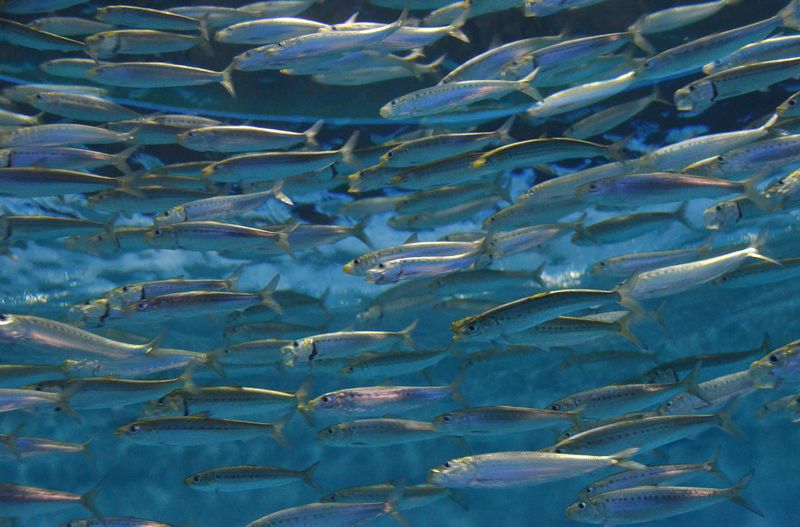
Pacific Sardines once swarmed the West Coast, their silvery bodies shimmering under the sun. They were the lifeblood of coastal communities, integral to both human diets and marine ecosystems.
Canned sardines were a pantry staple, offering a convenient and nutritious option. However, changes in ocean conditions and overharvesting caused their numbers to plummet.
These tiny fish were a powerhouse of omega-3s and protein, eagerly consumed by both humans and predators alike. The sight of sardines darting through waves is a vivid memory for those who frequented Southern California’s shores.
Lake Whitefish
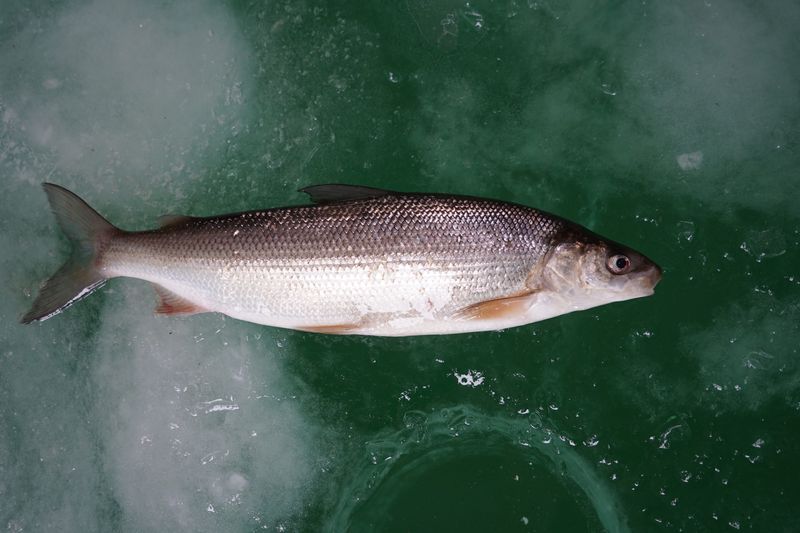
Lake Whitefish, with its delicate flavor and flaky texture, was once a Great Lakes favorite. Known for its subtle taste, it was often smoked or baked, gracing many family dinners.
This fish thrived in cold, deep waters, contributing to the rich biodiversity of inland lakes. Overfishing and habitat changes have since reduced its prevalence.
Revered by anglers for its sport, the Lake Whitefish’s journey from lake to plate is a tale of tradition and change. Today, it remains a cherished species, celebrated in local festivals highlighting its culinary and ecological value.
Atlantic Cod
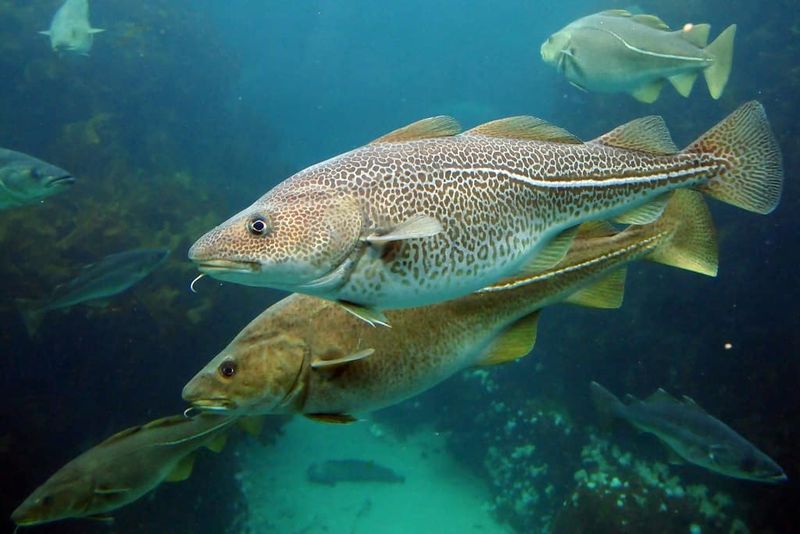
The Atlantic Cod once reigned supreme in New England waters, famed for its mild taste and flaky texture. Known as “the beef of the sea,” it sustained generations of fishermen and diners alike.
Cod was crucial to the region’s economy, forming the backbone of maritime trade. Unfortunately, intense fishing pressure led to its steep decline.
Today, efforts to revive cod populations are ongoing, a testament to its historical and cultural significance. This fish’s story is one of abundance turned cautionary, reminding us of the delicate balance within marine ecosystems.
American Shad
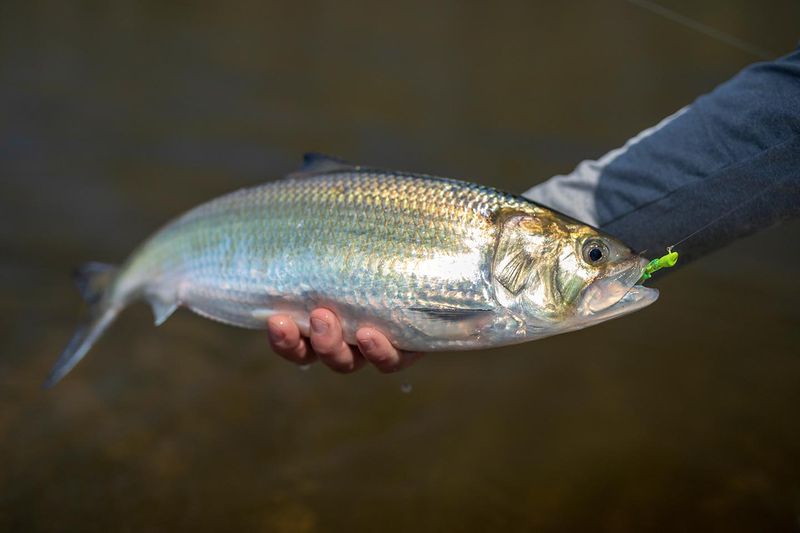
American Shad, known for their migratory prowess, once filled East Coast rivers with their seasonal runs. Their rich, oily flesh was a delicacy, often smoked or pickled.
These fish were celebrated for their role in traditional springtime festivals, heralding the arrival of warmer weather. Overfishing and dam constructions have since disrupted their natural migrations.
Despite challenges, efforts to restore shad populations have sparked hope. This resilient species symbolizes the enduring connection between natural cycles and cultural traditions, reminding us of the vital role of river ecosystems.
Atlantic Mackerel
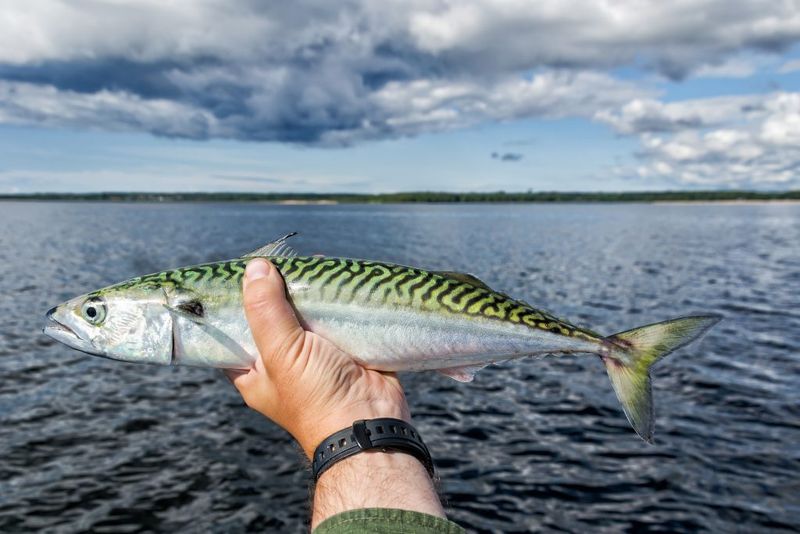
The Atlantic Mackerel, agile and vibrant, was a staple for fishermen along the Atlantic Coast. Known for its rich omega-3 content, it was a nutritious choice for myriad dishes.
Mackerel fishing supported many coastal economies, yet shifts in fishery management practices led to fluctuating stocks. Once abundant, their presence is now a fleeting reminder of past bounties.
Its fast, streamlined form symbolizes resilience and adaptability. Today, the mackerel’s story is one of conservation, underscoring the need for sustainable practices to preserve marine biodiversity for future generations.
Ocean Perch

Ocean Perch, with their striking reddish hue, were once a common catch from New England to the Pacific Coast. Their firm flesh was perfect for frying or baking, making them a family favorite.
These fish thrived in rocky marine environments, contributing to the diversity of coastal ecosystems. Environmental changes and overfishing have since reduced their numbers.
Still valued by those who remember their heyday, Ocean Perch are a testament to the rich tapestry of life beneath the waves. Their vivid colors evoke the beauty and complexity of ocean habitats.
Gulf Menhaden
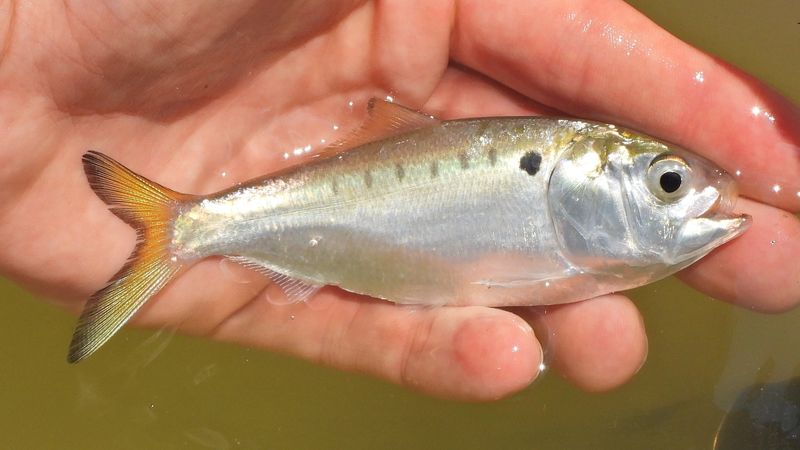
Gulf Menhaden, small yet significant, were the unsung heroes of the Gulf of Mexico’s marine food web. Known for their oil-rich flesh, they were invaluable for bait and industrial purposes.
These fish supported sprawling fisheries, their oil extracted for a variety of products including animal feed and supplements. However, intensive harvesting led to ecological concerns.
Efforts to balance Menhaden populations highlight the interconnectedness of marine species. Their story is a reminder of the vital roles even the smallest creatures play in oceanic health and human industry.
Sheepshead
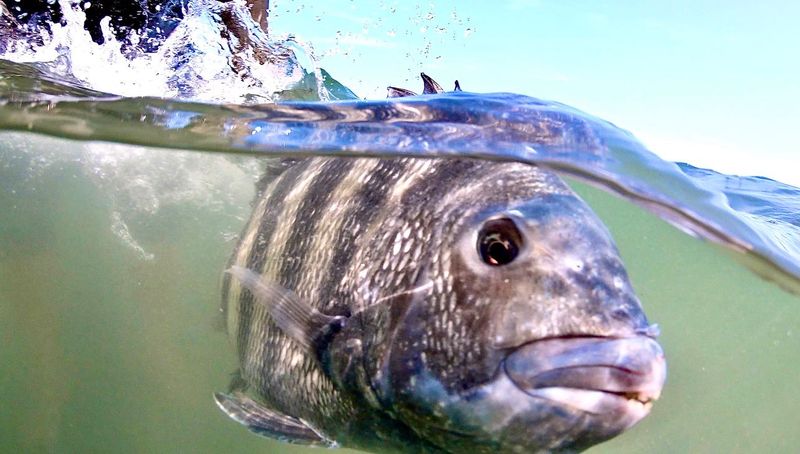
The Sheepshead, notorious for its human-like teeth, was once a popular catch from the Gulf to the Atlantic. Its sweet, flaky flesh made it a beloved choice for cooks and anglers alike.
These fish inhabit coastal waters, nibbling on crustaceans with their distinctive chompers. Over time, habitat changes and fishing pressure affected their populations.
The Sheepshead’s quirky appearance and delectable taste make it a fascinating subject for those exploring past culinary traditions. This fish tells a tale of adaptation and curiosity, embodying the diverse palette of coastal cuisine.
Winter Flounder
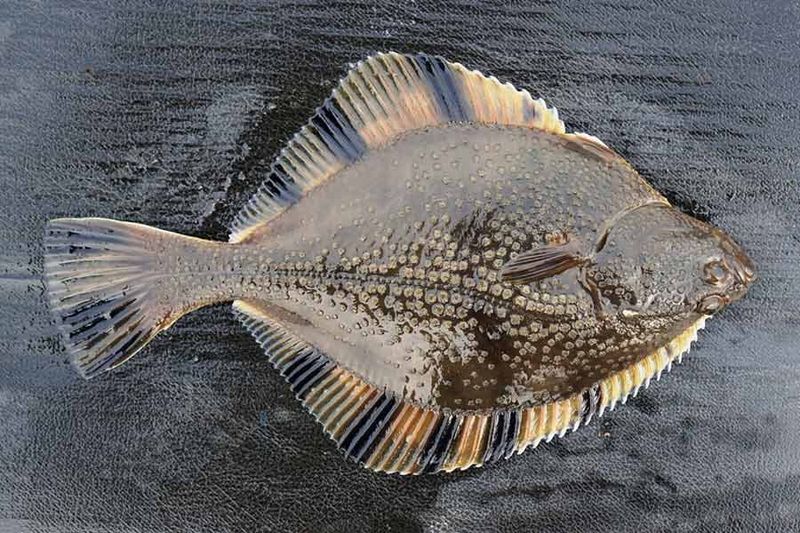
Winter Flounder, known for their camouflaging abilities, were a wintertime favorite along the Northeastern U.S. Their mild, sweet flesh was ideal for hearty, warming meals.
These fish blend seamlessly into sandy ocean floors, a testament to their evolutionary prowess. Overfishing and environmental changes have significantly impacted their numbers.
Despite challenges, Winter Flounder remains a symbol of resilience and culinary tradition. Their story highlights the importance of maintaining healthy marine habitats to support iconic species that have sustained communities through cold seasons.
Chinook Salmon

Chinook Salmon, the giants of the Pacific, were a cornerstone of West Coast fisheries. Known for their rich, flavorful flesh, they were dubbed the “king salmon.”
These fish undertook epic migrations, returning to spawn in the rivers of their birth. Overfishing and habitat destruction have threatened their historic runs.
Efforts to restore Chinook populations highlight their ecological and cultural importance. This majestic fish embodies the spirit of the wild, a powerful reminder of the intricate cycles that sustain life along the Pacific Rim.
Bluefish

Bluefish, with their feisty nature and sharp teeth, once dominated Eastern seaboard waters. Their robust flavor made them a favorite for grilling and smoking.
These predators are known for their aggressive hunting and schooling behavior, adding excitement to the fishing experience. Overfishing led to fluctuations in their populations.
Despite challenges, Bluefish remain a symbol of sport and sustenance, embodying the vibrant energy of coastal ecosystems. Their story is one of adventure and adaptability, inspiring those who seek the thrill of fishing these spirited creatures.
Yellow Perch
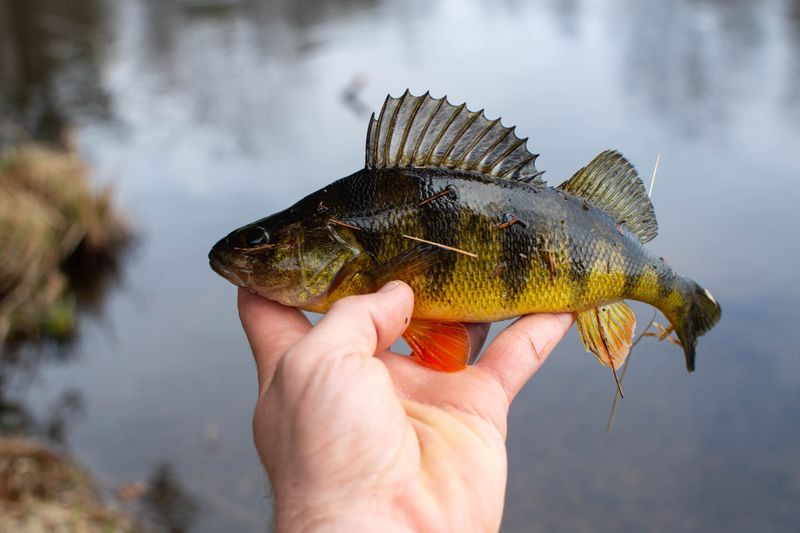
Yellow Perch, with their golden hues, were a prized catch in the Great Lakes region. Their mild, sweet flavor appealed to many, often featured in classic fish fries.
These fish thrive in freshwater lakes and rivers, contributing to local biodiversity. Changes in water quality and competition from invasive species have posed challenges to their populations.
The Yellow Perch’s legacy is one of community and tradition, celebrated in regional dishes that bring people together. They are a culinary icon, symbolizing the cherished waters and fishing practices of the Midwest.
Hogfish
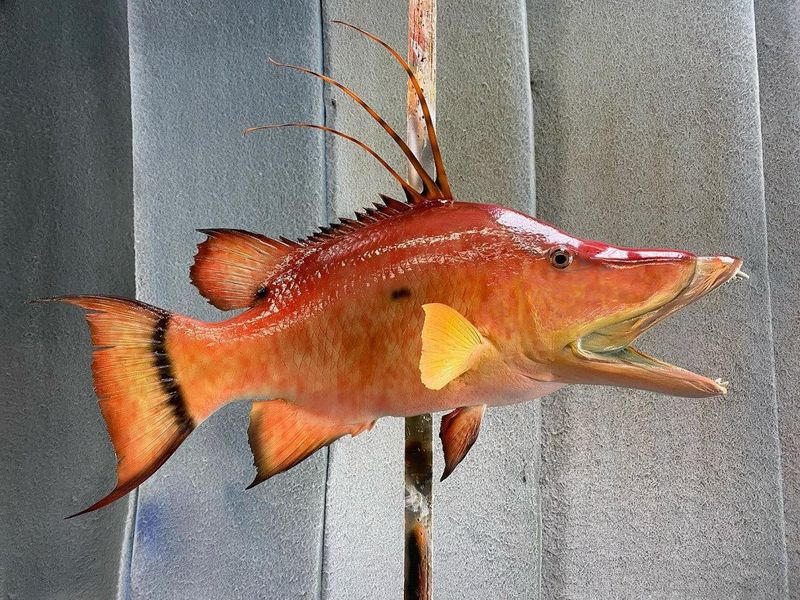
The Hogfish, with its distinctive snout resembling a pig’s nose, is more than just a quirky name. This vibrant fish once flourished in the warm waters of the Florida Keys, drawing anglers and divers alike. Its striking red-orange scales, contrasted by a sleek white underbelly, made it a visual delight.
Known for its curious nature, the Hogfish would often approach divers, inspecting them with what seemed like genuine interest. Despite its playful demeanor, this fish was a staple in local markets, prized for its delicate, white flesh.
Today, due to overfishing and habitat changes, spotting a Hogfish is a rare treat, echoing a time when these waters teemed with life.

